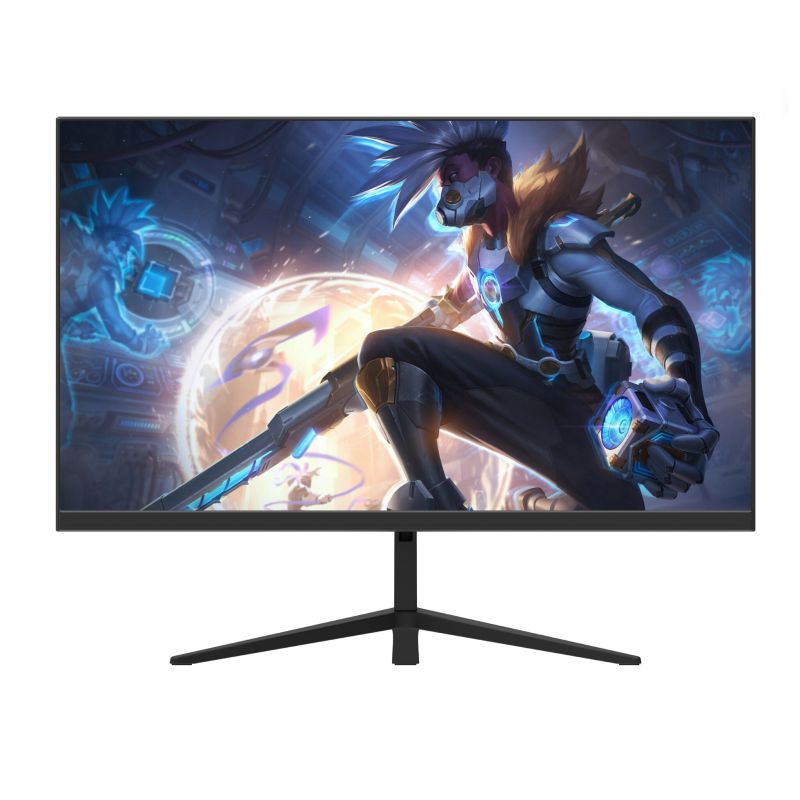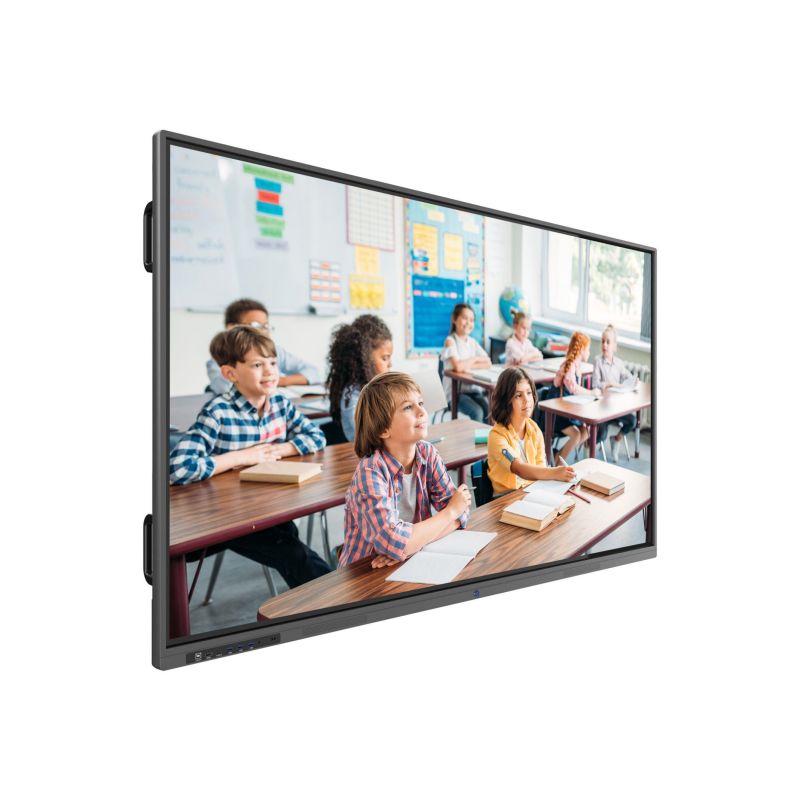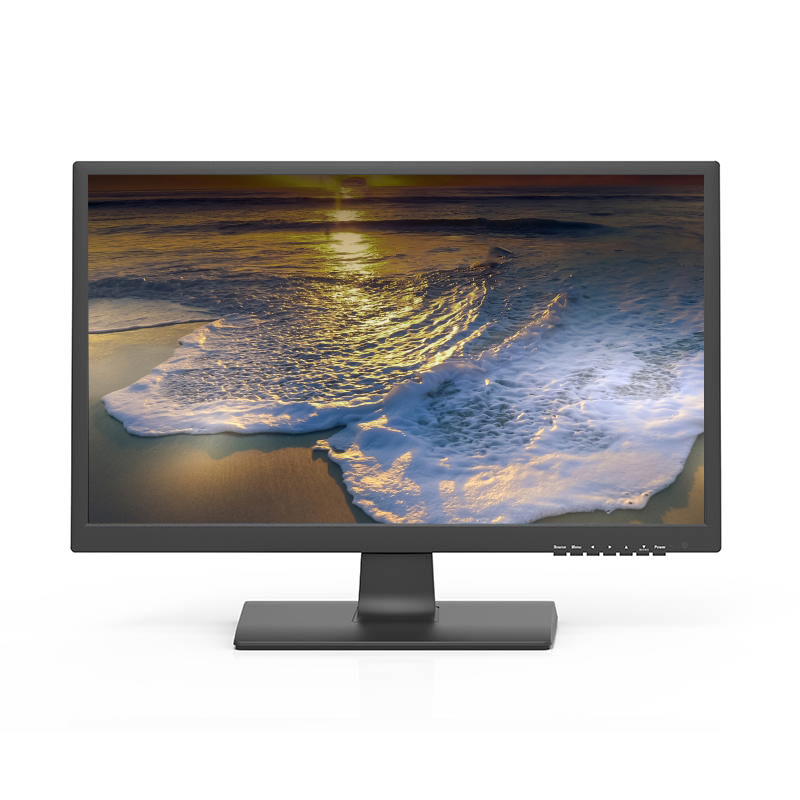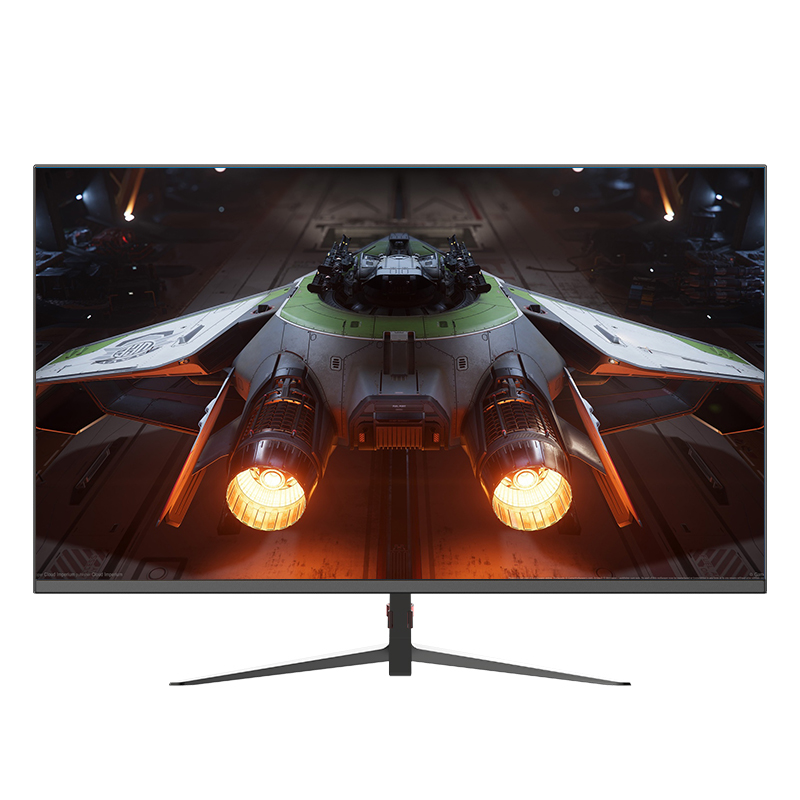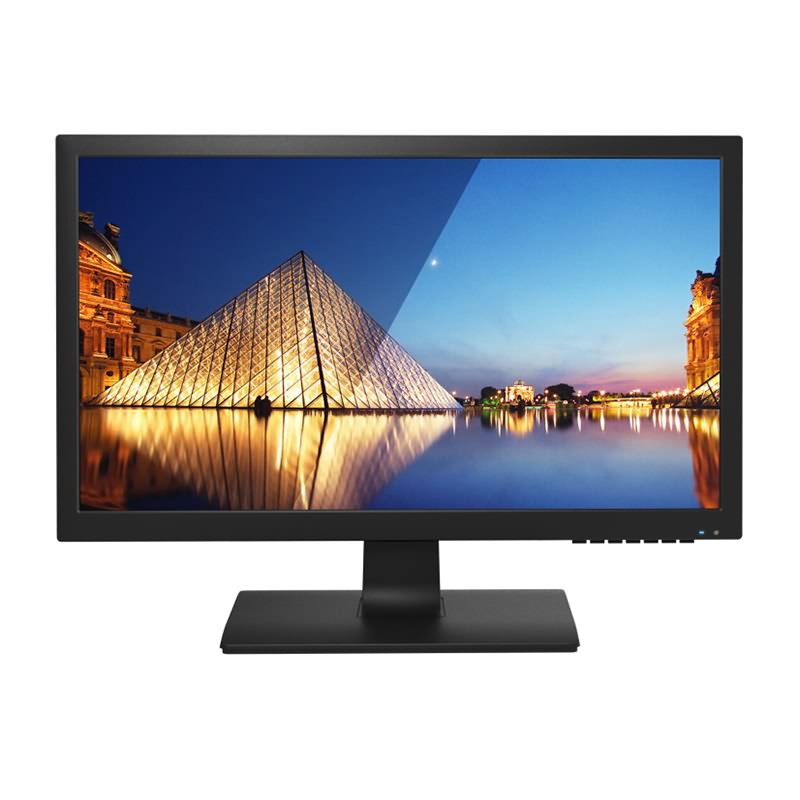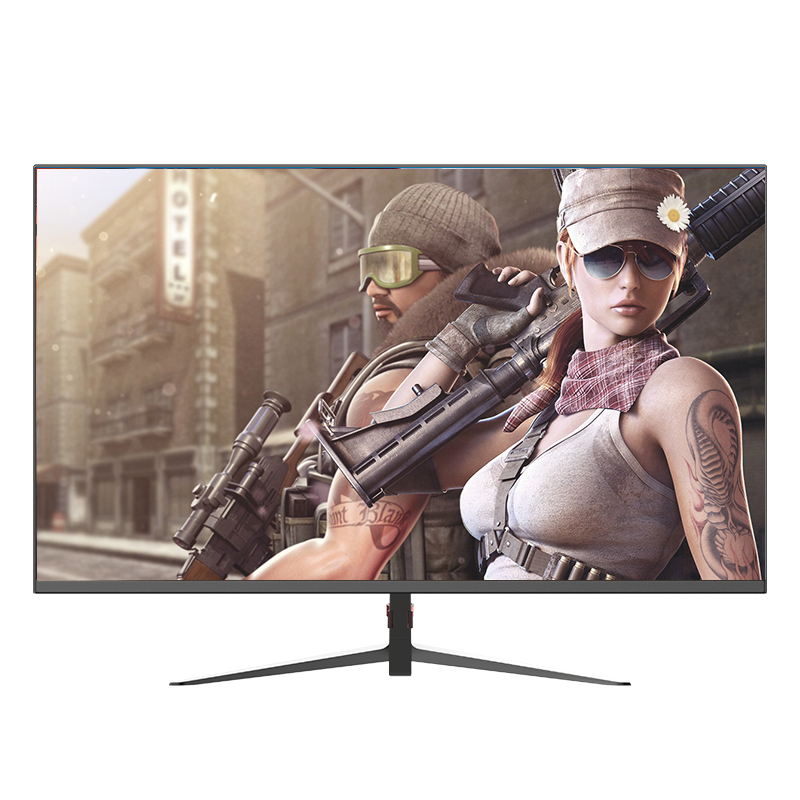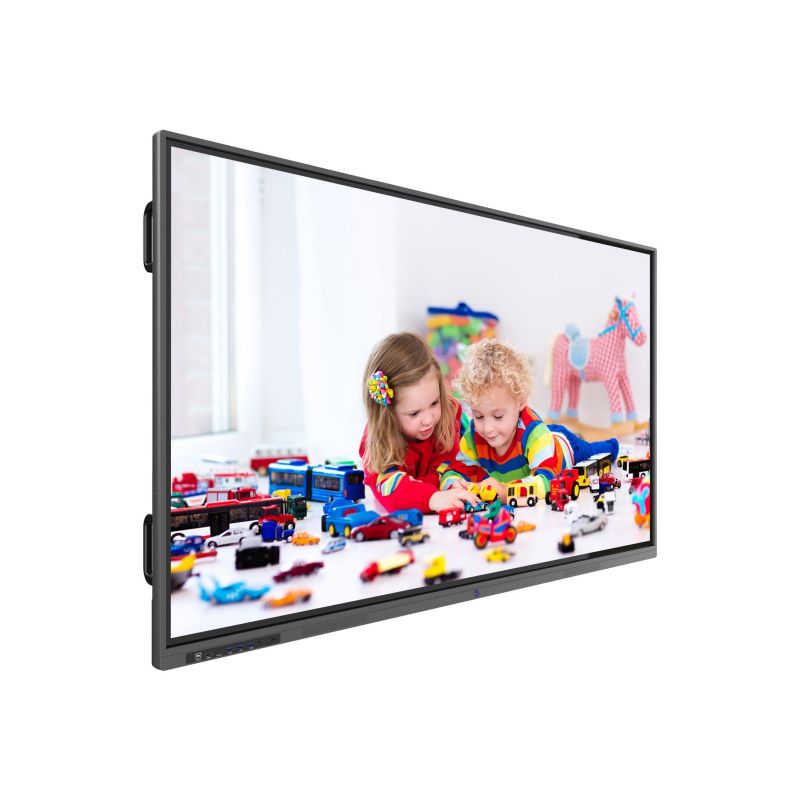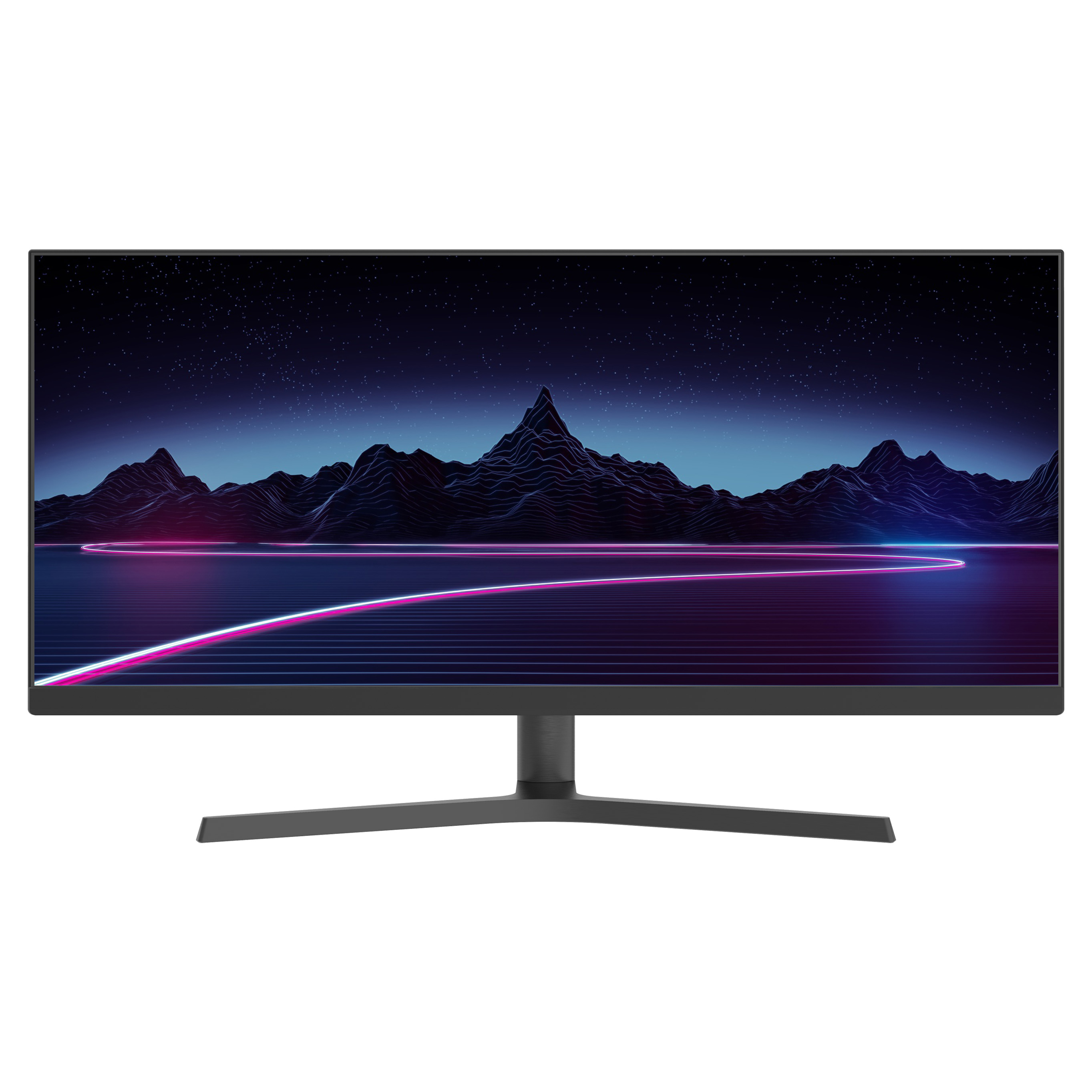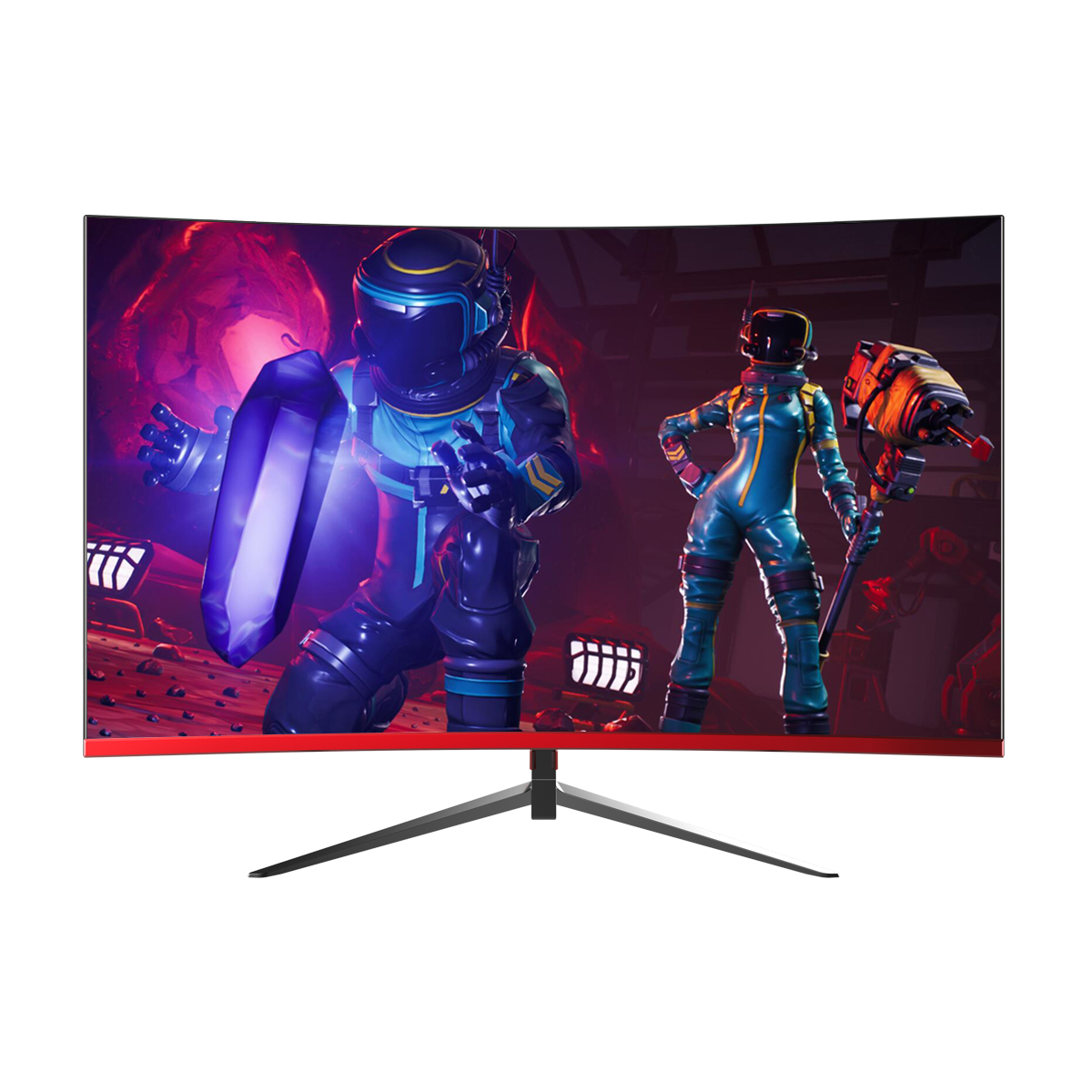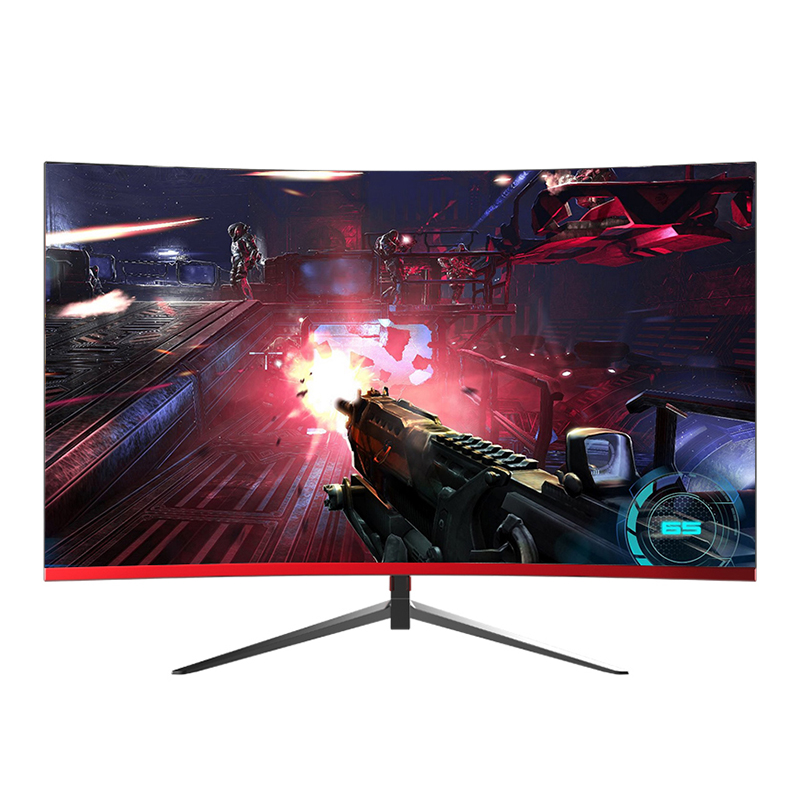| Model No.: | UG24BFA-200HZ | |
| Display | Screen Size | 23.8” |
| Panel | VA | |
| Bezel Type | No bezel | |
| Backlight type | LED | |
| Aspect Ratio | 16:9 | |
| Brightness (Max.) | 300 cd/m² | |
| Contrast Ratio (Max.) | 4000:1 | |
| Resolution | 1920x1080 @ 200Hz downwards compatible | |
| Response Time (Max.) | MPRT 1ms | |
| Viewing Angle (Horizontal/Vertical) | 178º/178º (CR>10) VA | |
| Color Support | 16.7M colors (8bit) | |
| Signal input | Video Signal | Analog RGB/Digital |
| Sync. Signal | Separate H/V, Composite, SOG | |
| Connector | HDMI +DP | |
| Power | Power Consumption | Typical 32W |
| Stand By Power (DPMS) | <0.5W | |
| Type | 12V, 3A | |
| Features | HDR | Supported |
| Over Drive | Supported | |
| Freesync | Supported | |
| Cabinet Color | Matt Black | |
| Flick free | Supported | |
| Low BLue Light Mode | Supported | |
| Height Adjustable stand | Optional | |
| VESA mount | 75x75mm | |
| Audio | 2x3W | |
| Accessories | HDMI 2.0 cable/Power Supply/User's manual | |
 The connections you need to connect to the devices you want, from laptops to soundbars. And with 100x100 VESA, you can mount the monitor and create a custom workspace that’s uniquely yours.We could provide 1% spare components (excluding the panel) of the monitor. Perfect Display’s warranty is 1 year. For more warranty information about this product, you can contact our customer service. All video games are rendered by computer hardware, no matter their platform or graphics. Mostly (particularly in the PC platform), the frames are spit out as quickly as they can be generated, because this usually translates to a smoother and nicer gameplay. There will be less delay between each individual frame and therefore less input lag. A problem that can occur sometimes is when the frames are being rendered faster than the rate at which the display refreshes. If you have a 60Hz display, which is being used to play a game rendering 75 frames per second, you may experience something called “screen tearing”. This happens because the display, which accepts input from the GPU at somewhat regular intervals, is likely to catch the hardware between frames. The result of this is screen tearing and jerky, uneven motion. Lots of games allow you to cap your frame rate, but this means that you’re not using your PC to its full ability. Why spend so much money on the latest and greatest components like GPUs and CPUs, RAM and SSD drives if you are going to cap their capabilities? What is the solution to this, you may wonder? A higher refresh rate. This means either buying a 120Hz, 144Hz or a 165Hz computer monitor. These displays can handle up to 165 frames per second and the result is much smoother gameplay. Upgrading from 60Hz to 120Hz, 144Hz or 165Hz is a very noticeable difference. It is something that you just have to see for yourself, and you can’t do that by viewing a video of it on a 60Hz display. Adaptive refresh rate, however, is a new cutting-edge technology that is becoming more and more popular. NVIDIA calls this G-SYNC, while AMD calls it FreeSync, but the core concept is the same. A display with G-SYNC will ask the graphics card how quickly it is delivering the frames, and adjusts the refresh rate accordingly. This will eliminate screen tearing at any frame rate up to the maximum refresh rate of the monitor. G-SYNC is a technology that NVIDIA charges a high licensing fee for and it can add hundreds of dollars to the price of the monitor. FreeSync on the other hand is an open source technology provided by AMD, and only adds a small amount to the cost of the monitor. We at Perfect Display install FreeSync on all of our gaming monitors as standard.
The connections you need to connect to the devices you want, from laptops to soundbars. And with 100x100 VESA, you can mount the monitor and create a custom workspace that’s uniquely yours.We could provide 1% spare components (excluding the panel) of the monitor. Perfect Display’s warranty is 1 year. For more warranty information about this product, you can contact our customer service. All video games are rendered by computer hardware, no matter their platform or graphics. Mostly (particularly in the PC platform), the frames are spit out as quickly as they can be generated, because this usually translates to a smoother and nicer gameplay. There will be less delay between each individual frame and therefore less input lag. A problem that can occur sometimes is when the frames are being rendered faster than the rate at which the display refreshes. If you have a 60Hz display, which is being used to play a game rendering 75 frames per second, you may experience something called “screen tearing”. This happens because the display, which accepts input from the GPU at somewhat regular intervals, is likely to catch the hardware between frames. The result of this is screen tearing and jerky, uneven motion. Lots of games allow you to cap your frame rate, but this means that you’re not using your PC to its full ability. Why spend so much money on the latest and greatest components like GPUs and CPUs, RAM and SSD drives if you are going to cap their capabilities? What is the solution to this, you may wonder? A higher refresh rate. This means either buying a 120Hz, 144Hz or a 165Hz computer monitor. These displays can handle up to 165 frames per second and the result is much smoother gameplay. Upgrading from 60Hz to 120Hz, 144Hz or 165Hz is a very noticeable difference. It is something that you just have to see for yourself, and you can’t do that by viewing a video of it on a 60Hz display. Adaptive refresh rate, however, is a new cutting-edge technology that is becoming more and more popular. NVIDIA calls this G-SYNC, while AMD calls it FreeSync, but the core concept is the same. A display with G-SYNC will ask the graphics card how quickly it is delivering the frames, and adjusts the refresh rate accordingly. This will eliminate screen tearing at any frame rate up to the maximum refresh rate of the monitor. G-SYNC is a technology that NVIDIA charges a high licensing fee for and it can add hundreds of dollars to the price of the monitor. FreeSync on the other hand is an open source technology provided by AMD, and only adds a small amount to the cost of the monitor. We at Perfect Display install FreeSync on all of our gaming monitors as standard. Generally speaking, Freesync is extremely important for gaming, not just for avoiding tearing but for insuring an overall smoother experience. This is especially true if you're running gaming hardware that's outputting more frames than your display can handle. G-Sync and FreeSync are solutions to both of these issues by having the display refresh at the same pace as frames are rendered by the graphics card, resulting in smooth, tear-free gaming.
Generally speaking, Freesync is extremely important for gaming, not just for avoiding tearing but for insuring an overall smoother experience. This is especially true if you're running gaming hardware that's outputting more frames than your display can handle. G-Sync and FreeSync are solutions to both of these issues by having the display refresh at the same pace as frames are rendered by the graphics card, resulting in smooth, tear-free gaming.
 High-dynamic range (HDR) displays create deeper contrasts by reproducing a higher dynamic range of luminosity. An HDR monitor can make highlights look brighter and deliver richer shadows. Upgrading your PC with an HDR monitor is worth it if you play video games with high-quality graphics or watch videos in HD resolution. Without getting too deep into the technical details, an HDR display produces greater luminance and color depth than screens built to meet older standards.
High-dynamic range (HDR) displays create deeper contrasts by reproducing a higher dynamic range of luminosity. An HDR monitor can make highlights look brighter and deliver richer shadows. Upgrading your PC with an HDR monitor is worth it if you play video games with high-quality graphics or watch videos in HD resolution. Without getting too deep into the technical details, an HDR display produces greater luminance and color depth than screens built to meet older standards. 


